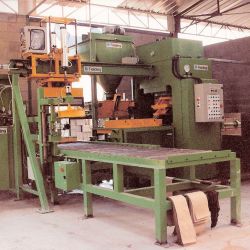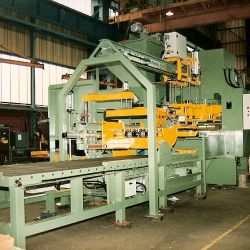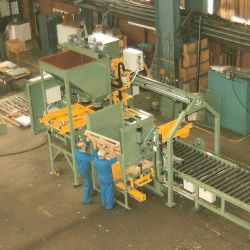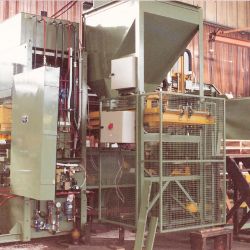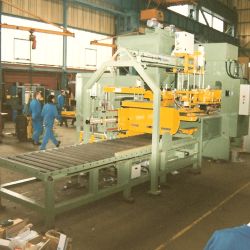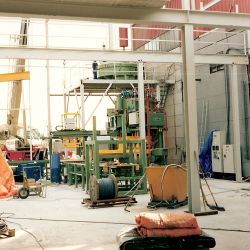The single mould press is of a much simpler design and the initial cost is lower than the triple-mould press. However, the trend is for concrete producers to employ the triple-mould press where higher output is required. The single mould press is most suitable for lower quantity and special production runs requiring frequent mould changes.
Over the years both types of press have been continually developed and are designed specifically to operate within the harsh environment of a concrete works. Particular attention has been made to the robustness of the design in order to ensure complete reliability.
Notable features of the design include:
- Quiet running, with no noisy vibration system
- Solenoid operated, manifold mounted hydraulic valves
- The Fielding and Platt high-speed radial piston pump, which has been proven to be extremely reliable. Alternative pumps may be supplied at customer request.
- All press movements are interlocked so as to prevent any out of sequence damage to the press.
The superior quality inherent in concrete products manufactured by the unique Fielding & Platt Wet-Mix Process ensures a far longer life and retention of surface finish than can be obtained from counterpart products manufactured by other methods.
The high pressure exerted during the operation gives an extremely dense product with high strength and good wearing qualities. This high density, together with a fine surface finish reduces the water-absorption characteristics of the final product and gives a correspondingly high resistance to frost damage. Furthermore, the wet-mix process has the added advantage of ensuring that adequate moisture is available to provide complete hydration of the cement. This has proved particularly beneficial in countries where ambient temperatures are very high.
During the pressing operation the cement and fines in the mix are retained within the mould by the filter medium and only the excess water is expelled. The risk of voids is virtually eliminated and the retained fines on the surface produce a smooth and even finish. In addition, through the use of a specially contoured plate in the bottom of the mould, sharp patterned and contoured surface finishes can be obtained.
The mix ratio of cement to aggregate is an important factor in any concrete product and this ratio is the overriding factor in determining final component properties. It has been proven however that products produced by the wet-mix process utilising the Fielding & Platt Press require at least 10 to 15% less cement to achieve the same properties (better in some cases) than any other method. A typical mix proportion of aggregate to cement is 8:1.
In addition to the standard range of presses, F&P have designed and installed presses for other granular materials including glass, reinforced concrete, cattle feed, and grinding wheels.


